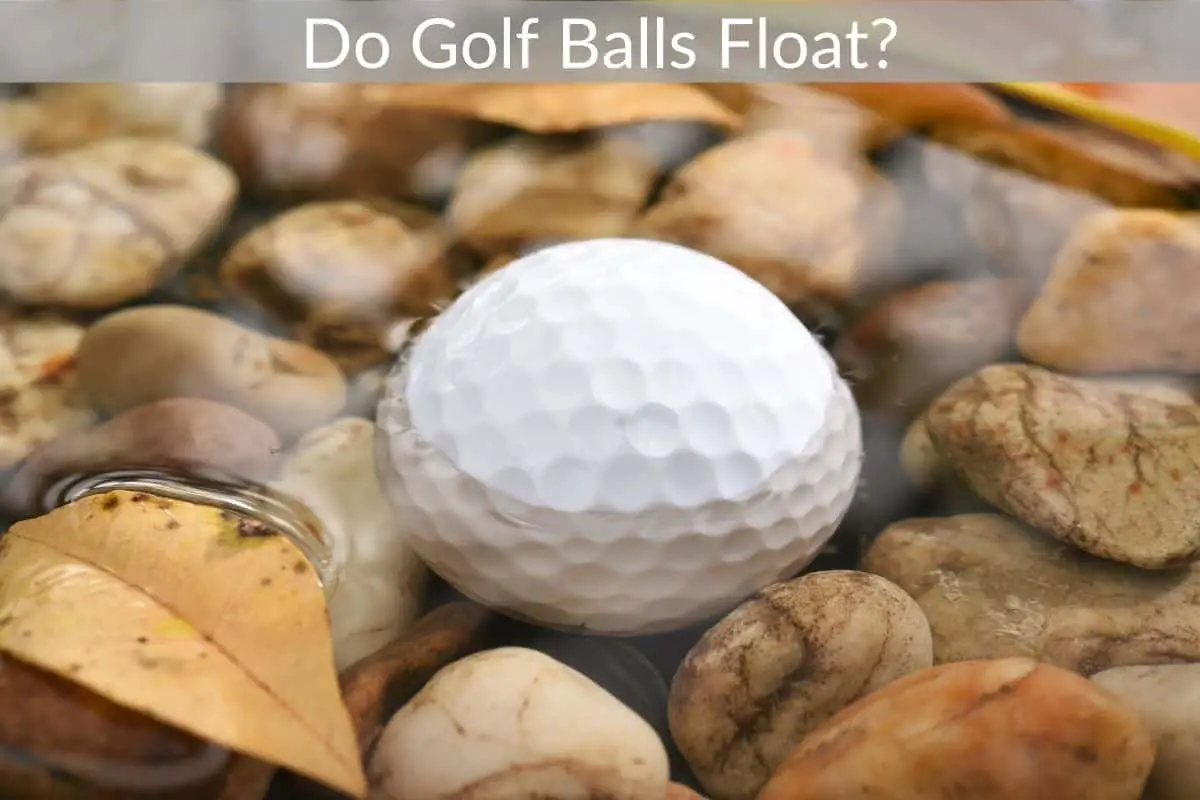Table of Contents
*This post may contain affiliate links. As an Amazon Associate we earn from qualifying purchases.
Rock hard, extremely bouncy, and most of all, extremely sturdy, golf balls are among the more peculiar objects in the world of sports. They are extremely lightweight and feel hollow, but what happens when you put them in water?
Do golf balls float?
Normal golf balls will always sink in freshwater however they will often float in salt water. This is because golf balls have a density of 1.015 g/mL, while freshwater has a base density of 1 g/ml. Only things less dense than water float; so, golf balls will always go down into the water.
However, that is not all there is to it.
Golf balls are rather interesting; they are made out of rubber almost entirely. However, their outer shell is thermoplastic resin or urethane. Both of these things are very dense, yet the ball is just 0.015 g/mL denser than water.
Should that small difference mean that the ball should float in the water? Below I will go into more detail about golf balls and why they don’t float.
Understanding the Physics Of Golf Balls Floating
When was the last time you hit a golf ball into the pond and found it floating on the surface? Unless you’ve been playing next to the sea or the pond had saltwater in it, rarely. This is because the golf ball lacks buoyancy.
The outer shell of a golf ball is very light and tends to remain suspended in the water. However, the interior core is dense. Depending on the ball you choose to cut up, it can contain either one, two, three, or four layers of rubber.
However, no matter the number of layers or the material used within, the ball’s weight will always be the same, i.e., 45.93 grams. This weight is set by the R&A and USGA to ensure optimal flight and a consistent trajectory across the board.
Even at that weight, the manufacturers could still make the ball float if they chose to. Do you know how ships that weigh thousands of tons float? The same principle could be applied here, too.
However, for that, the ball’s diameter would need to be changed or the material itself that is used.
R&A and USGA also mandate the types of material allowed and the diameter, which should be no less than 42.67mm.
Since a lot of weight is contained within the small surface area, the force applied in a small area is heavier than a unit of water. If the ball’s weight remains the same but is spread across a large area, say the size of a football, it will float. So, when you hit it into a lake, river, or pond, you might as well just forget about it.
Quite simply, golf balls sink because they are more dense than the water is and because of their size their weight isn’t spread out enough to allow them to float.
Why Are Golf Balls Deliberately Made Heavier?
Golf balls are made heavy deliberately – not so that the balls can be sold off to recycling companies when they go into a pond but because of flight time and trajectory.
The goal is to ensure that the ball doesn’t fly off-course when at maximum height because of the wind and to make the ball cover the “optimal distance.”
If you’ve ever played tennis or cricket with a tennis ball, you’ll know how even the slightest of winds can affect where the ball is going to land. Think about it; golfers continue playing without any stoppages come rain or wind.
On the other hand, cricketers or tennis players have to wait for the weather to improve.
That’s because a tennis ball is a lot lighter and so will be greatly affected by the wind. While a golf ball will also be affected by the weather since it is heavier it won’t be affected as much.
Do Any Golf Balls Float?
There are some floating golf balls that you can purchase if you don’t want to deal with lost balls in ponds. These balls are made less dense than the water deliberately to ensure they float.
Although the manufacturer tries to keep its performance as close to the original as possible, you will still find that these balls won’t perform like your regular golf balls will.
With floating golf balls and a golf ball retriever, you won’t ever lose another ball to the pond.
These floating golf balls are also relatively cheaper than the original balls because of the reduced performance and less material being used. I would recommend you don’t practice for too long with these balls unless you don’t want to play professionally.
These floating golf balls are great to save you from losing your ball but will not be good for practicing as they will respond far differently to your club and swing than normal golf balls will.
Then again, as hinted previously in the article, even your regular golf ball can float in the water if the conditions are just right.
How Do Normal Golf Balls Float?
As discussed, the main factor at play for golf balls to float or sink is the density of both objects. The suspended salt particles in water increase their weight and, therefore, their density per ml. The water will need to have enough salt in it to make the density rise to at least 1.016 g/ml to make a golf ball float.
Saltwater in the ocean will normally have 1.027 g/ml for density which means it will be denser than golf balls. So golf balls will float in the ocean but not in most water hazards on the course, since that will normally be freshwater.
If you want to make freshwater dense enough to have golf balls float there is a fun experiment that you can do to make that happen.
To make a golf ball float in freshwater, you will need:
• Water
• Salt
• A container
• A golf ball
Start by filling your container up to at least half or ¾ with water. Put the ball in, and you will see that the ball will sink immediately. Pull the ball out and start adding salt into the mix. Add two tablespoons and either check the water’s density or just put the ball back in.
Keep on adding salt until you see that the golf ball doesn’t go all the way down but is only halfway there. This means that the water’s density has risen to at least 1.015 g/ml.
Add a bit more salt into the mix and try again. You will see that the ball will now float at the top.
If you leave your golf ball in water, it will begin absorbing water and breaking down. The outermost shell, (i.e. the plastic resin layer) breaks down and lets water into the rubber. Over time, the ball will get lighter because of decomposition, but it would take years.
Final Thoughts
Normal golf balls don’t float in fresh water but they will float in salt water. There is a very good reason behind it too, golf balls are denser than water so they float.
To keep consistency in weight and the ability to fly straight even during strong winds, golf balls are made to be heavy and dense. If they were lighter, your tee time would have to be changed a lot, especially if you live in a windy area.
There have been many changes to the golf ball design over the years and there are likely numerous more to come. However, one thing that will always be true is that golf balls will always be compact and have a lot of weight in them.
Although several of them make their way to the bottom of the the pond, it is a small price to pay for industry-wide consistency.

